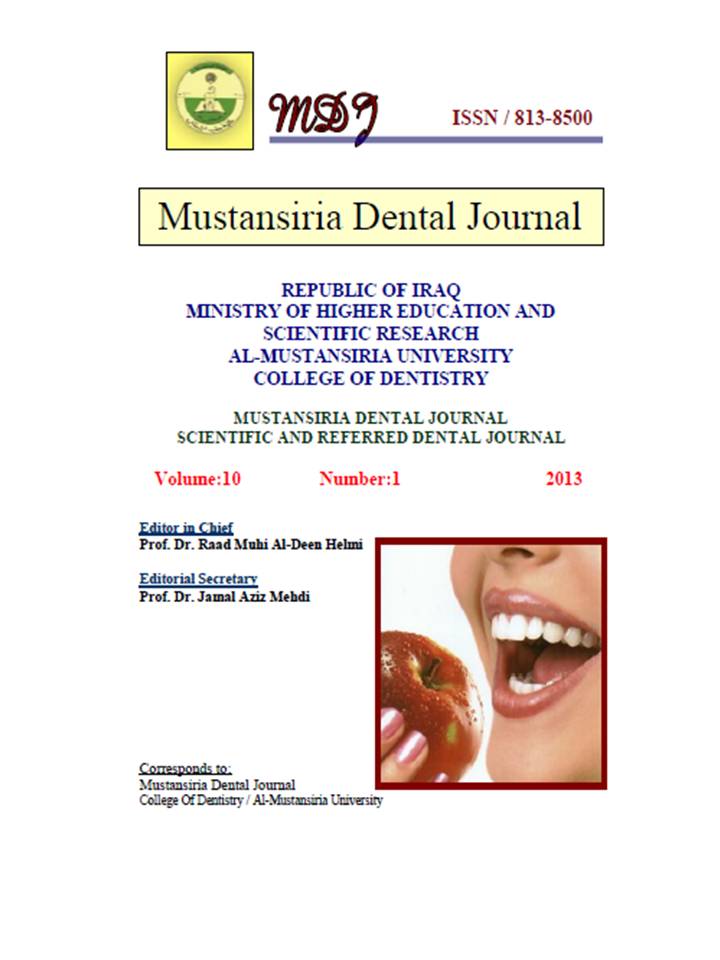The efficiency and benefit of using, the halogen light source used for bleaching of teeth, in bonding of orthodontic brackets (an in vivo study)
DOI:
https://doi.org/10.32828/mdj.v10i1.182Keywords:
Key words: halogen bleaching light, led light, brackets bondinAbstract
Background: The property of the bleaching light sources is the wide and curved
(the negative of the mouth curve) head of exposure. The aim of this study was to,
test the efficiency of this devise to bond orthodontic brackets, via unique exposure
for the whole teeth, by comparing the rate of the brackets failure with the
traditional led light source used in orthodontic brackets bonding which utilizes
light exposure for every tooth separately, and evaluating the benefit of time saving
through contrasting the time required for bonding with the ordinary led and
halogen light sources.
Materials and methods: 856Roth 0.22 stainless steel brackets were bonded to 39
patients by using one of the two light sources in the form of three groups;
bleaching light group (13 patients / 225 brackets) , ordinary led light group (13
patients /237 brackets), split mouth group( by using combination of the two
sources, 13patients / 229 brackets).
Results: There is no statistically significant difference between the light source used
for bleaching and traditional led light source in bracket failure rates, and the time
required for bonding by the bleaching light source is 22% and 5% of that required
by ordinary led light and ordinary halogen light respectively.
Conclusion: the light sources used for bleaching can be used effectively in bonding of
orthodontic brackets with given advantage of saving time and effort.

Downloads
Published
Issue
Section
License
The Journal of Mustansiria Dental Journal is an open-access journal that all contents are free of charge. Articles of this journal are licensed under the terms of the Creative Commons Attribution International Public License CC-BY 4.0 (https://creativecommons.org/licenses/by/4.0/legalcode) that licensees are unrestrictly allowed to search, download, share, distribute, print, or link to the full texts of the articles, crawl them for indexing and reproduce any medium of the articles provided that they give the author(s) proper credits (citation). The journal allows the author(s) to retain the copyright of their published article.
Creative Commons-Attribution (BY)








